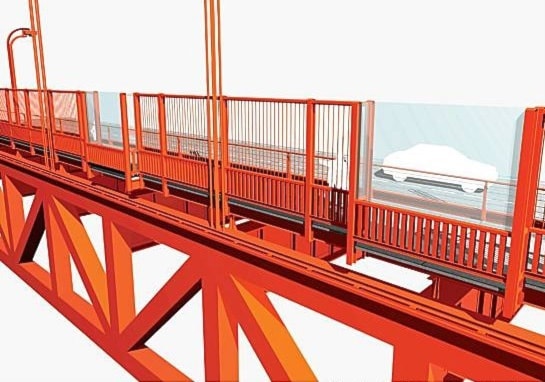B.C.'s transportation ministry now says it's starting to design suicide prevention barriers it will install on the Ironworkers' Memorial Bridge and it is studying the option for the Lions Gate Bridge.
But there are no plans to install them on any other spans, despite a recommendation more than three years ago from the B.C. Coroners Service that they be added to five Metro Vancouver bridges.
Those recommendations, released in late 2008 after a review of youth suicides, called for anti-suicide barriers on the two North Shore bridges as well as the Burrard, Granville and Pattullo bridges.
At least a dozen distressed people die each year jumping from Lower Mainland bridges.
Construction of the Ironworkers barrier should begin next year, Transportation Minister Blair Lekstrom said, but it's not clear when or if one will go up on the Lions Gate.
Instead, six crisis phones were installed on the Lions Gate in 2009 and another six were installed this March on the Ironworkers.
Callers who pick up those phones are connected to crisis counsellors who answer around the clock.
So far at least 25 calls to the crisis line from the Lions Gate have allowed counsellors to intervene in potential suicide attempts. The call was made by the person at risk 15 times and by intervening bystanders another 10 times.
Crisis call boxes may be added at the Pattullo Bridge as well, according to TransLink spokesman Drew Snider, who said the idea is under discussion.
So far that bridge only has a sign indicating a crisis line number to call.
He said there are no plans to retrofit the Pattullo to add suicide barriers because the bridge is slated to be replaced by 2018 and adding a barrier would make the sidewalk dangerously narrow.
The only bridge that has a suicide barrier is TransLink's Golden Ears Bridge.
It has vertical bars that make it much harder to climb up and over the railing, in accordance with a revised design standard requiring barriers on new bridges since 2004.
Ian Ross, executive director of the Crisis Intervention and Suicide Prevention Centre of B.C., said he'd like to see more crisis phones at the Pattullo, Granville and Burrard bridges and he hopes work advances quickly on new barriers.
"Phones are a start but by no means are they the solution," he said. "Many suicides will be prevented, if we restrict the physical means to suicide."
He said signs, phones, cameras, higher railings and nets are all good ideas, as well as "human barriers" like crisis lines, bike and foot patrols on all Lower Mainland bridges and more coordinated community action.
There were 12 bridge suicides recorded last year in the Lower Mainland, including three from the Lions Gate and one each from the Granville, Burrard, Alex Fraser and Pattullo bridges.
From 2006-2011 there have been 111 bridge suicides in Metro Vancouver or the Fraser Valley, according to the B.C. Coroners' Service.
During that six-year period, a total of 26 jumped from the Lions Gate Bridge, 15 from the Pattullo, 15 from the Granville Street Bridge, six each from the Knight Street and Alex Fraser bridges, five each from the Ironworkers Memorial and Burrard Street bridges, and four ended their lives at the Port Mann Bridge.
Consulting firm Stantec was hired by the province to examine prevention options options after a 2008 suicide attempt on the Ironworkers brought Highway 1 traffic to a standstill for several hours on July 1, 2008.
One of the challenges the October 2008 report flagged is that a barrier on the Lions Gate could reduce its aerodynamic stability in strong winds.
It found safety nets installed under the two North Shore bridges might cost around $15 million, while physical barriers above the railings are pegged at $25 to $30 million.
"Installation of barriers is generally the most effective and also the most expensive solution," the report found.
Stantec found more work was required and suggested the province be guided by a "cost-benefit analysis considering the number of successful and attempted suicides together with the cost of dealing with incidents and associated road user delays."
